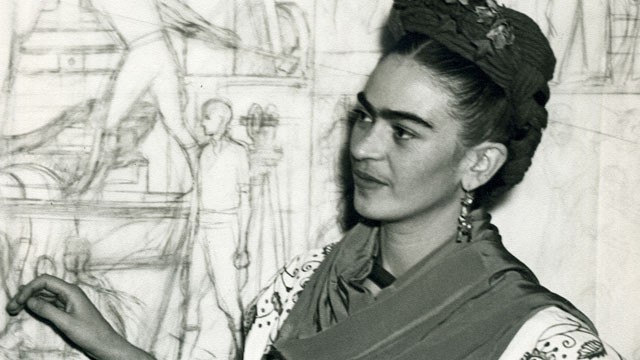
'Imagine being in Frida Kahlo's childhood home and opening up a closet that has been locked for decades. Inside are hundreds of personal items – personal photographs, love letters, medications, jewelry, shoes, and clothing that still hold the smell of perfume and the last cigarette she smoked.
That is exactly what happened when Hilda Trujillo Soto, the director of the Frida Kahlo Museum opened the closets that had been locked since the Mexican artist's death in 1954. Inside were over 300 items belonging to Frida Kahlo, and now, a wide array of what was found is on display at the Casa Azul, the
Frida Kahlo Museum in the Coyoacán neighborhood of Mexico City.
The exhibit, Appearances Can Be Deceiving: The Dresses of Frida Kahlo, a collaboration between the museum and
Vogue Mexico, brings to an end an elaborate 50 year scheme to keep private the intimate details of Kahlo's life. It started when she died in 1954, as a distraught
Diego Rivera, the famous Mexican muralist and Frida Kahlo's husband, locked the doors to her closet and never let anyone enter for fear that the contents would be mishandled and ruined.
When he died in 1957 the task of protecting its contents went to a dear friend and patron,
Dolores Olmedo, who promised him that the closet would remain unopened until 15 years after his death. She kept her word. In fact, she decided to keep the closet locked until her own death. And she lived a long life, passing away in 2002 at the age of 93.
Eventually, museum personnel decided it was time to look inside. And what a discovery. Art historians and fashionistas already knew Frida was unique and ahead of her time. But, what the items in the exhibit show are that despite the disabilities, the monobrow, and the violent depictions of the female anatomy in some of her paintings, Frida Kahlo was a bit of a girlie girl who wore makeup, used perfume and dressed up her prosthetic leg with a red high-heeled boot. Her clothing aimed for style and self-protection but it also made a statement, both political and cultural.
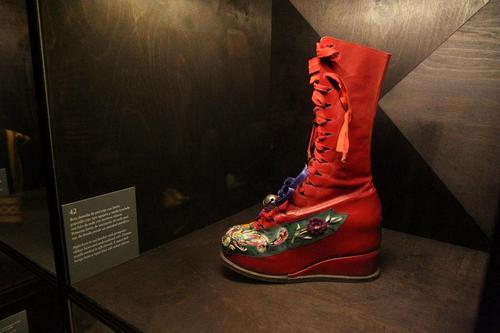
This was especially true of the Tehuana dresses Kahlo wore like a "second skin," said Circe Henestrosa, the exhibit curator. Colorful and carefully made by indigenous artisans, they were a tribute to the matriarchal Tehuantepec society whose women were traders, considered equals with the men. Tehuana's long skirts were also the perfect way for Kahlo to hide her ailments, including a polio-deformed leg she would eventually have amputated.
"This dress symbolizes a powerful woman," Henestrosa said, adding: "She wants to portray her Mexicanidad, or her political convictions, and it's a dress that at the same time helps her distinguish herself as a female artist of the 40s. It's a dress that helps her disguise physical imperfections."
It is a fashion exhibit built around those two themes – disability and ethnicity. The highlights include several of the Tehuana dresses, corsets that Kahlo wore to keep her damaged spine straight and fancy embroidered satin shoes. Her cat-eye style sunglasses and a baguette clutch purse are among the surprising personal items displayed in a glass cabinet.'
Read the full article and watch a video here - http://abcnews.go.com/ABC_Univision/frida-kahlo-fashion-exhibit-opens-mexico-city/story?id=17810830#.UOrLPW-vGSo






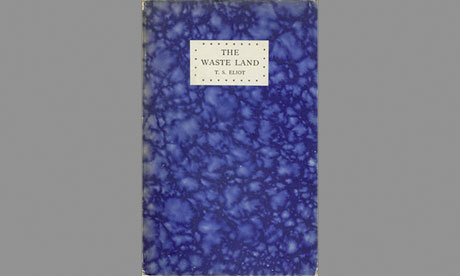

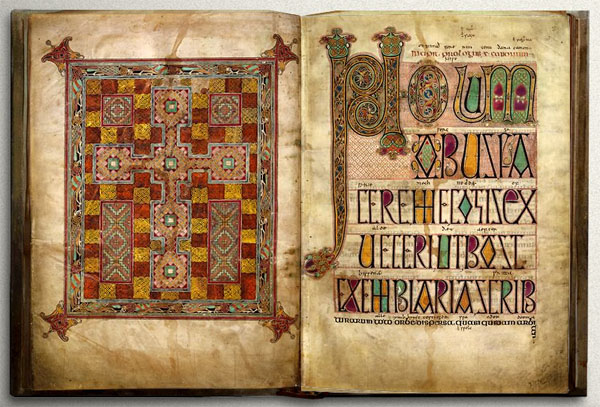 As part of the British Library's commitment to digitising some of the most extraordinary manuscripts, we now have access to the Anglo Saxon Lindisfarne Gospels through its 'Turn the Pages' application - This allows you to turn the pages of the manuscript, magnify it, hear an audio description of the page or read a written description.
As part of the British Library's commitment to digitising some of the most extraordinary manuscripts, we now have access to the Anglo Saxon Lindisfarne Gospels through its 'Turn the Pages' application - This allows you to turn the pages of the manuscript, magnify it, hear an audio description of the page or read a written description. The physical gospels are currently being exhibited in Durham from today (1st July)! See the website here.
The physical gospels are currently being exhibited in Durham from today (1st July)! See the website here.






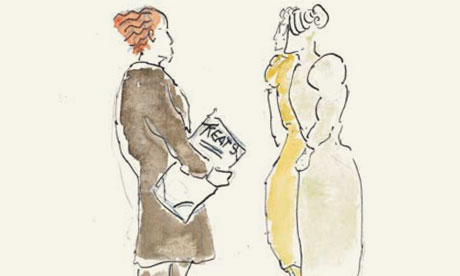 '"It seemed stupid to have a real author so close at hand and not have her contribute," he said of the project. Woolf agreed to get involved, and wrote or dictated a series of supplements – illustrated by Quentin – for the newspaper between 1923 and 1927. The booklets describe the escapades, characters and antics of Bell and Woolf's family, as well as their household servants and members of the Bloomsbury Group.'
'"It seemed stupid to have a real author so close at hand and not have her contribute," he said of the project. Woolf agreed to get involved, and wrote or dictated a series of supplements – illustrated by Quentin – for the newspaper between 1923 and 1927. The booklets describe the escapades, characters and antics of Bell and Woolf's family, as well as their household servants and members of the Bloomsbury Group.'